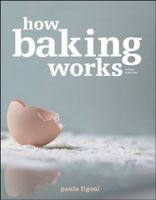Label
All
0
Clear all filters
Changes to the Third Edition
Appears in
By Paula Figoni
Published 2003
While the core format and theme of the text remains the same, several important additions and changes have been made to the third edition of How Baking Works. Some of these changes are as follows:
- A new chapter has been added that focuses on baking for health and wellness. This chapter (Chapter 18) includes information on creating pastries and baked goods to improve the general health of all consumers. It also includes information on baking for special diets, including baking for diabetics and those with food allergies and sensitivities.
- The chapter on fats and oils (Chapter 9) was revised and enlarged to reflect changes in the industry, which have been substantial in the few years since the publication of the second edition of this book. Many of these changes were precipitated by the switch away from trans fats across North America and beyond. Besides adding more information on alternatives to trans fats, information was included on the processing of fats and oils in general to increase depth of understanding. By necessity, more chemistry on fats and oils was included in this chapter. The text is still primarily for beginning students, however, so all attempts were made to isolate much of this advanced material in sidebars, separate from the main text.
- The order of chapters was altered slightly, based on the suggestions of readers and reviewers. While each chapter was written to stand alone, some chapters are more meaningful when read in the context of material from earlier chapters. The new ordering of chapters capitalizes on this building of knowledge, and it also better reflects the importance of some ingredients over others in the bakeshop. The chapter on eggs, for example, was moved forward, ahead of thickening and gelling agents. Likewise, the chapter on chocolate products was moved ahead of the chapters on fruits and on flavorings.
- Several changes were made to exercises and experiments at the end of each chapter. First, more exercises and experiments were included and many were revised. More important, the formatting of the experiments was improved to make the directions easier to follow and the evaluation of results clearer. Finally, questions at the end of each exercise and experiment were rewritten to better integrate the lessons of the lab with the material in the text. The objective was to reinforce important points made in the text with what is taught in the experiments.
- Many new photos, drawings, charts, and tables were added, and many more revised.
- Sections including those on the tempering of chocolates and the functions of emulsifiers were revised to simplify explanations while still maintaining or even improving on the integrity of the science behind the explanation. As part of this, facts, underlying details, and descriptions were carefully checked, and wording throughout the text was revised accordingly.
- Questions at the end of each chapter were reviewed for clarity and revised as needed; additional questions were added to reflect changes to the text.
Become a Premium Member to access this page
Unlimited, ad-free access to hundreds of the world’s best cookbooks
Over 160,000 recipes with thousands more added every month
Recommended by leading chefs and food writers
Powerful search filters to match your tastes
Create collections and add reviews or private notes to any recipe
Swipe to browse each cookbook from cover-to-cover
Manage your subscription via the My Membership page
Best value
Part of
Advertisement
Advertisement
The licensor does not allow printing of this title


